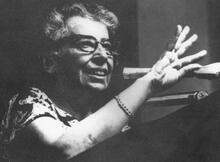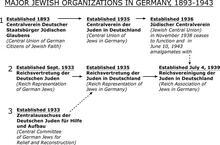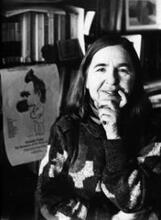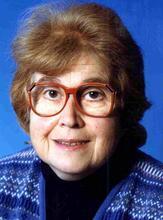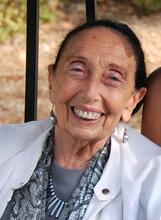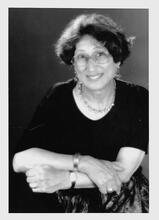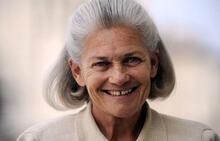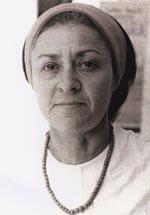Margarete Kahn
Margarete Kahn was born in Eschwege and began working with another Jewish woman, Klara Löbenstein at Berlin Uuniversity. Attending lectures from notable mathematicians, physicists, and psychologists of the time, they settled at the Unviersity of Göttingen, where they met the great mathematician David Hilbert. Kahn and Löbenstein made an essential contribution to the solving of Hilbert’s famous Problem sixteen, and their work was cited in the publications of Hilbert and others. Unable to earn a post-doctoral degree due to discrimination against women, Kahn worked as a teacher until the Nazis came to power. She was deported in 1942 and is considered to be “missing.”
Margarete Kahn was a student of the great mathematician David Hilbert (1862–1943), who decisively influenced the development of mathematics around the turn of the century. Of his sixty-nine doctoral students, six were women—four foreigners and two German-born Jewish women. Both the latter wrote their doctoral theses on topology and worked on Problem sixteen of the famous Twenty-three Mathematical Problems presented by Hilbert in a lecture he delivered in 1900 at the International Congress of Mathematicians in Paris.
Early Life
Margarete Kahn was born in Eschwege on August 27, 1880, daughter of Albert Kahn and Johanne (née Plaut) Kahn. Her father was a factory owner who could afford to pay for his daughter’s education. After attending an elementary school in 1889 and a girls’ high school (Höhere Töchterschule) from 1889 to 1896, Margarete acquired further education through private tuition between 1901 and 1904. In that year she graduated externally at a boys’ school (Königliches Gymnasium) in Hersfeld. Together with another Jewish woman, Klara Löbenstein (b. 1883), she studied mathematics, physics, and philosophy, first for three semesters at Berlin University, then for one semester at the University of Göttingen, again for one semester in Berlin, returning to Göttingen for at least four more semesters. In Berlin, Margarete Kahn also participated in mathematical exercises at the Technische Hochschule.
Career
In Göttingen, the two friends attended lectures with the mathematicians Felix Klein (1849–1925) and Hilbert, with the physicist Woldemar Voigt (1850–1919), and the psychologist Georg-Elias Müller (1850–1934). In Berlin, they attended lectures with the philosopher Paul Drude and the mathematician Hermann Amandus Schwarz (1843–1921). Finally, both of them were drawn to Göttingen, where Felix Klein and David Hilbert had established an international centre of mathematics in which women were encouraged to participate. It was Hilbert who encouraged Margarete and Klara to undertake scientific work in modern fields.
In 1891, Hilbert posited that an algebraic curve of the sixth order cannot consist of eleven outside-situated ovals. In 1900, this contention became established in Hilbert’s famous Problem sixteen. Margarete Kahn and Klara Löbenstein made an essential contribution to solving this problem. They finished their doctoral theses in June 1909 with important results on the topology of curves. Using a new method—Continuitätsverfahren—Margarete Kahn analyzed plane curves of the sixth order. Hilbert underlined the importance of the results in his judgement of their doctoral theses, and again stressed them in a paper of his own, as the first deep-seated and complicated fact of the topology of curves. Kahn’s and Löbenstein’s important results in topology are also mentioned in later publications.
Nevertheless, professors of the philosophical faculty tried to hinder the granting of doctorates to the two Jewish women mathematicians. Margarete Kahn and Klara Löbenstein had written curriculum vitae, of which the texts were virtually identical, since they had studied together. Some non-mathematician faculty members concluded that they were deceiving the faculty. Together with other professors of mathematics Hilbert had to invest enormous effort in order to have both doctorates approved. On June 30, 1909, Margarete Kahn took her doctoral exam in mathematics, physics and psychology, but a scientific career was not possible because women could not obtain post-doctoral degrees (Habilitation) at German universities until 1920. She—and also Klara Löbenstein—took their degrees as teachers of those subjects a year later, on July 22, 1910.
Later Life
In October 1912, Margarete Kahn obtained a position as a secondary school teacher, working in various places. From 1929 she taught at a girls’ school in Berlin. In 1933, she was compelled to go to another school in Berlin, but was able to continue working because she had already been a teacher before World War I. She lost her position on January 1, 1936 but did not emigrate and thus became a victim of the Nazi regime. At the time of the 1939 census, she lived in Rudolfstädter Strasse in Berlin-Wilmersdorf. After doing forced labor as a worker in the“Nordland Schneeketten” factory in Berlin, she was deported on March, 28, 1942 with the eleventh transport to Trawniki and is considered to be “missing.” (We still do not know the fate of Klara Löbenstein.)
Selected Works
Kahn, Margarete. Eine allgemeine Methode zur Untersuchung der Gestalten algebraischer Kurven. Inaugural-Dissertation, Faculty of Philosophy at the University of Göttingen. Göttingen: 1909.
Löbenstein, Klara. Beweis des Satzes, dass eine algebraische Curve 6. Ordnung mit 11 getrennten Ovalen nicht existiren kann. Inaugural-Dissertation, Faculty of Philosophy at the University of Göttingen. Göttingen: 1910.
Archives of the Göttingen University, Promotionsakte Margarete Kahn; Archives of the Stiftung “Neue Synagoge Berlin – Centrum Judaicum”.
Archives of “Bibliothek für bildungsgeschichtliche Forschung” Berlin, Personalblatt für Lehrerinnen höherer Schulen in Preußen M. Kahn.
Hilbert, David. Gesammelte Abhandlungen. Vol. 2 (Algebra, Invariantentheorie, Geometrie). Berlin: 1933.
Tobies, Renate. “Felix Klein und David Hilbert als Förderer von Frauen in der Mathematik.” Prague Studies in the History of Science and Technology, N.S. Vol. 3 (1999) S. 69–101.
König, York-Egbert, Christina Prauss, and Renate Tobies. Margarete Kahn und Klara Löbenstein: Mathematikerinnen, Studienrätinnen, Freundinnen. Hentrich & Hentrich: Berlin, 2011.

